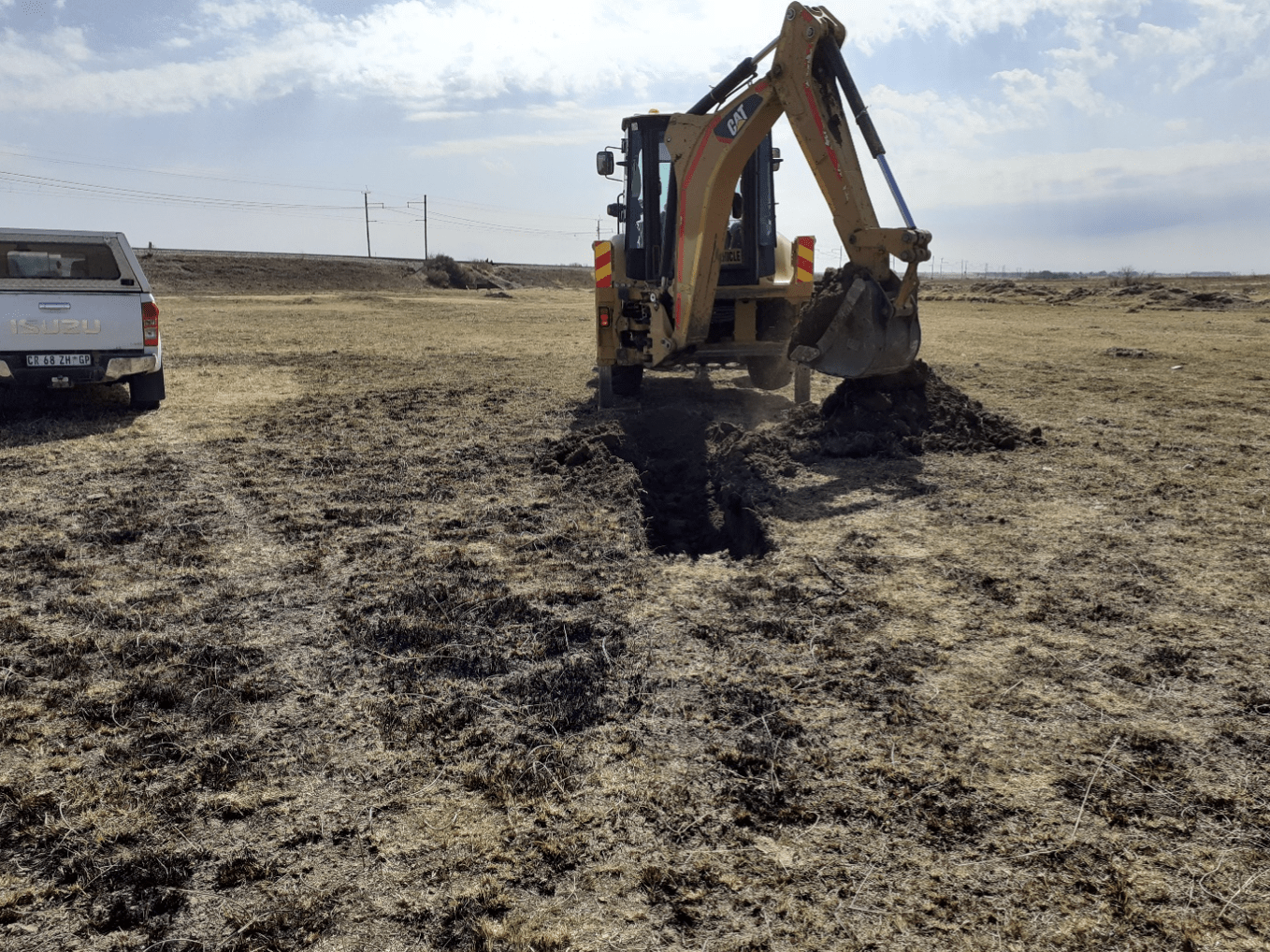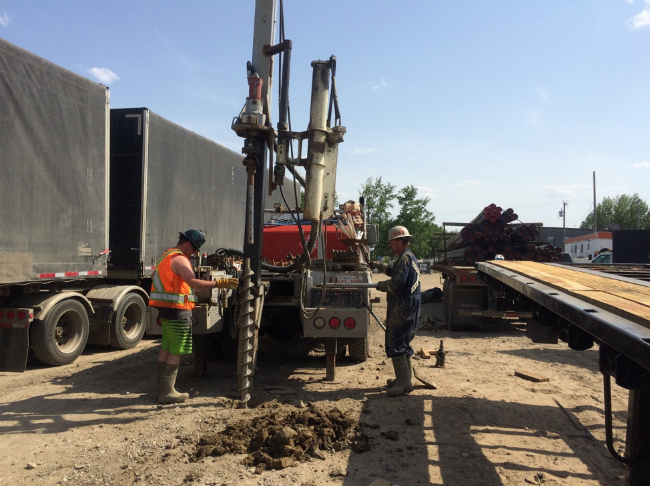Comprehending the Principles: Regarding Geotechnical Engineering in Modern Construction
Comprehending the Principles: Regarding Geotechnical Engineering in Modern Construction
Blog Article
Exploring the Interdisciplinary Nature of Geotechnical Design and Its Impact on Ground Renovation and Structure Design
The interdisciplinary nature of geotechnical engineering plays a crucial function in forming cutting-edge ground enhancement approaches and foundation style techniques. By integrating understandings from structural, ecological, and geological self-controls, geotechnical engineers are outfitted to deal with complex soil actions and site-specific challenges. This collaborative method not only boosts the efficiency of methods such as dirt stablizing and dynamic compaction however also makes certain that jobs stick to sustainability principles. What implications does this interdisciplinary synergy have for future growths in the field, particularly in the context of emerging building innovations?
Review of Geotechnical Engineering
Geotechnical design is a critical branch of civil design that concentrates on the behavior of planet products and their communication with frameworks. This technique includes the study of dirt, groundwater, and rock, intending to comprehend their buildings and exactly how they impact the performance of civil design projects. Geotechnical engineers analyze the mechanical and hydraulic habits of these products to make certain the stability and security of frameworks such as structures, bridges, and keeping wall surfaces.
The range of geotechnical engineering includes site examinations, soil tasting, and testing, as well as evaluation of dirt mechanics and rock auto mechanics. Engineers use sophisticated techniques to review ground problems, determine prospective threats, and style effective ground renovation solutions. This may entail approaches such as soil stabilization, grouting, and making use of geosynthetics, which improve the strength and toughness of the ground.
Moreover, geotechnical design plays a crucial role in structure design, figuring out appropriate foundation kinds based upon dirt characteristics and filling problems. By integrating extensive screening and analysis, geotechnical designers contribute significantly to the sustainability and strength of facilities, ensuring that structures can stand up to functional and environmental stresses over time.
Secret Interdisciplinary Relationships

Additionally, environmental engineering plays an essential function in evaluating the impact of geotechnical tasks on the bordering ecological community. This collaboration is important for developing lasting practices that decrease ecological deterioration throughout excavation or ground improvement processes.
In addition, the combination of geotechnical engineering with geology improves the understanding of subsurface problems, assisting in even more precise site characterizations (geotechnical engineer description). This connection aids in hazard evaluation, specifically in areas vulnerable to landslides or seismic activity, thus informing risk reduction methods
Finally, improvements in technology have actually resulted in interdisciplinary cooperation with information scientific research and geoinformatics. These areas add to improved modeling and evaluation techniques, permitting for more accurate predictions of soil actions under different problems. Therefore, the interconnectedness of these techniques enhances geotechnical design, advertising innovation and performance in structure design and ground renovation.
Ground Improvement Methods
Ground enhancement techniques are vital techniques used to enhance the design homes of dirt, thereby boosting its load-bearing capacity and security. These strategies are particularly important in areas where all-natural soil conditions are poor for supporting structural loads or where environmental elements may jeopardize soil honesty.
Commonalities enhancement techniques consist of soil compaction, which enhances density and minimizes void spaces, and grouting, which involves infusing products right into dirt to fill up voids and bind particles with each other - about geotechnical engineering. Other methods include the setup of dirt nails and supports, which supply additional support, and using geosynthetics to enhance dirt frameworks. Deep blending approaches, such as soil-cement columns, can additionally substantially improve the stamina and rigidity of weak dirts
In addition, vibrant compaction and vibro-replacement strategies are commonly utilized to boost soil homes in situ. These methods can mitigate concerns associated with negotiation and liquefaction, particularly in seismic locations. By employing a combination of these cutting-edge methods, geotechnical engineers can successfully deal with site-specific difficulties, ensuring that the foundation systems will certainly carry out sufficiently under prepared for loading problems, therefore adding to general job success.
Foundation Style Considerations
Effective structure design considerations are vital for the long life and security of structures. A well-designed structure has to adequately support the tons of the structure while fitting soil problems, environmental aspects, and prospective modifications over time. link Key variables include soil bearing ability, settlement features, and groundwater problems.
Comprehending the soil profile via geotechnical investigations is crucial, as it notifies the selection of foundation type-- be it shallow, deep, or specialized approaches such as stack structures or floor covering structures. The expected tons, consisting of online, dead, and environmental tons, need to be accurately computed to guarantee the structure can stand up to possible failing devices, such as moving, overturning, or extreme negotiation.
In addition, considerations for frost deepness, seismic task, and potential dirt liquefaction in seismic go to this site zones are vital. In addition, drain and moisture control have to be incorporated into the foundation style to reduce issues associated with hydrostatic stress and dirt erosion.
Partnership among engineers, engineers, and geotechnical specialists is vital to create a thorough foundation style that not just meets regulative demands but also guarantees the long-term performance and security of the framework. Inevitably, thorough planning and innovative remedies are needed to attend to the complexities intrinsic in foundation style.
Study and Ideal Practices

One notable study includes the use of deep dirt mixing in a skyscraper task in a seismic area. This technique considerably enhanced the soil's strength and security, enabling a more secure and a lot more reliable structure system (geotechnical engineer description). The project highlighted the significance of selecting suitable ground improvement approaches based on site-specific problems, consisting of soil type and loading needs
One more example is the application of vibrant compaction for improving the bearing ability of weak soils underneath an industrial center. This method efficiently lowered settlement concerns and improved total website performance, demonstrating the effectiveness of integrating traditional design practices with modern-day technology.
Best techniques acquired from these study emphasize the necessity of comprehensive website investigations, partnership among multidisciplinary groups, and the incorporation of sophisticated modeling tools. By adopting these lessons, geotechnical engineers can optimize foundation designs and ground enhancement techniques, eventually causing much safer and more lasting construction outcomes.
Final Thought
Finally, the interdisciplinary nature of geotechnical engineering considerably boosts ground improvement and foundation design. By incorporating principles from numerous engineering disciplines, customized strategies are established to deal with details challenges connected to soil buildings and ecological impacts. This collaborative technique not only ensures optimum structure security and safety and security however likewise promotes lasting construction techniques. Proceeded exploration of these interdisciplinary partnerships will even more advance the area, resulting in innovative options that respond effectively to developing engineering needs.
The scope of geotechnical engineering includes website investigations, soil sampling, and testing, as well as analysis of soil mechanics and rock technicians. The connection between geotechnical design and structural engineering is especially crucial, as the performance of frameworks is greatly influenced by dirt habits and residential properties.Typical ground enhancement techniques consist of dirt compaction, which raises density and minimizes void areas, and grouting, which includes injecting materials right into dirt to fill up gaps and bind bits together. Other strategies consist of the installation of soil nails and anchors, which provide additional assistance, and the use of geosynthetics to strengthen soil frameworks. A properly designed foundation has to effectively sustain the load of More Bonuses the building while accommodating soil conditions, ecological aspects, and possible adjustments over time.
Report this page